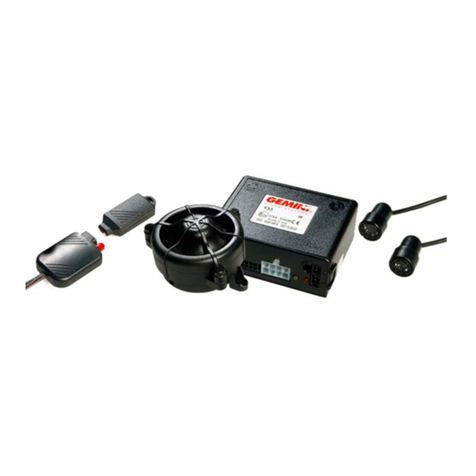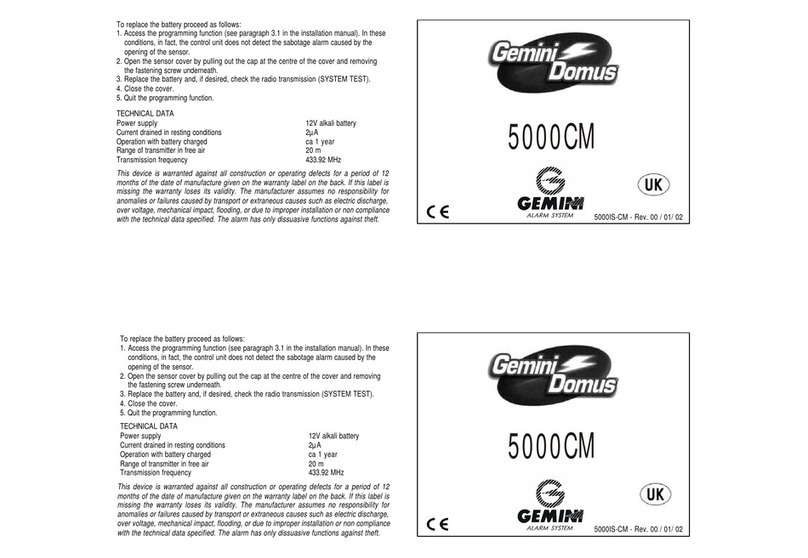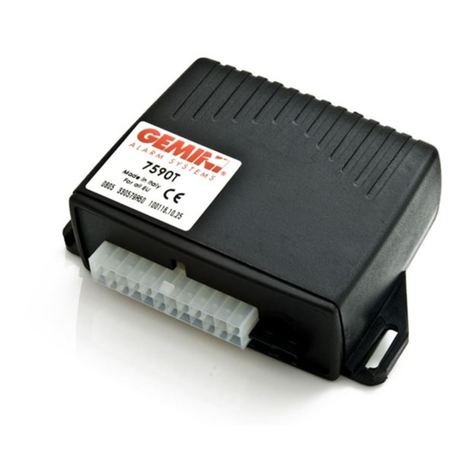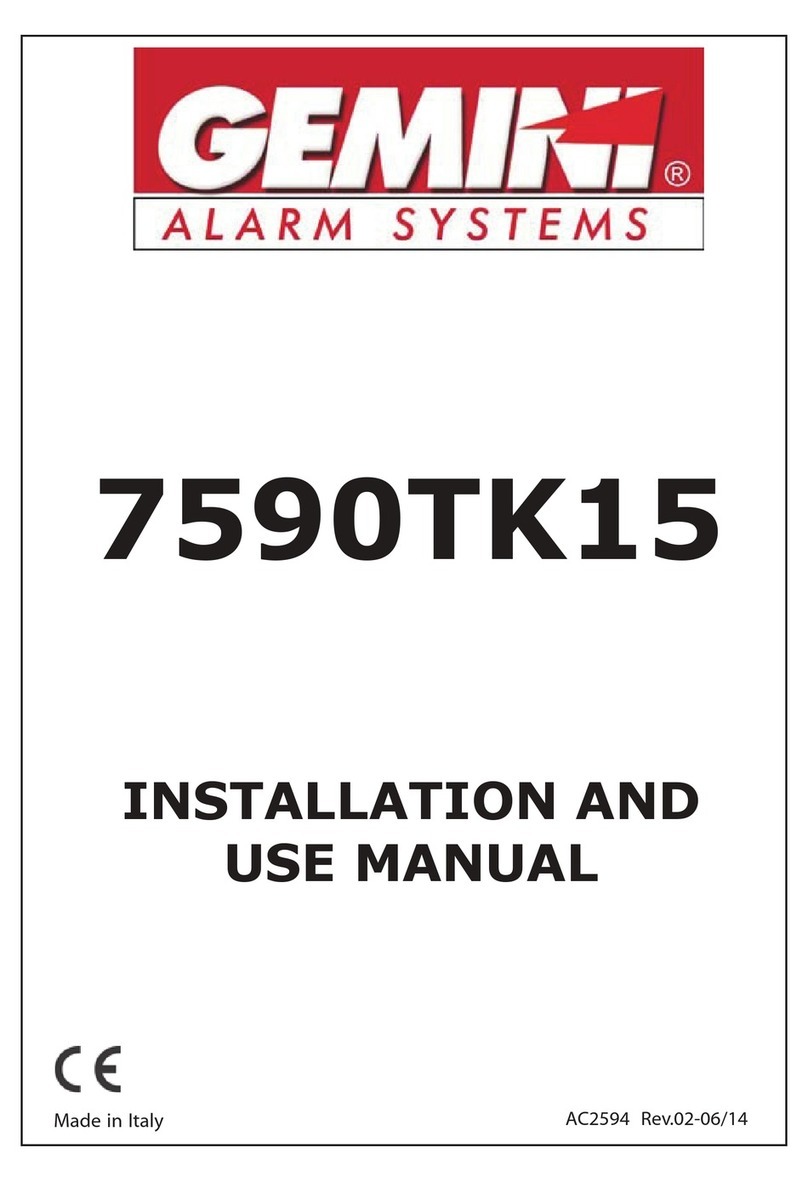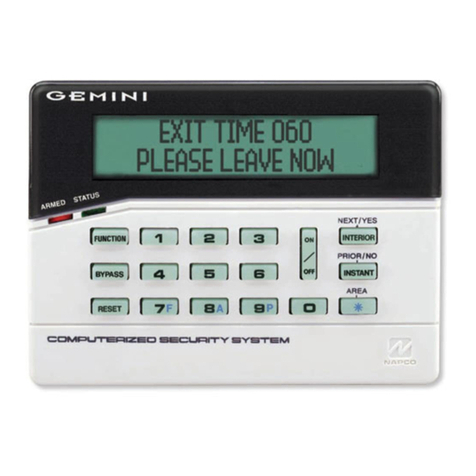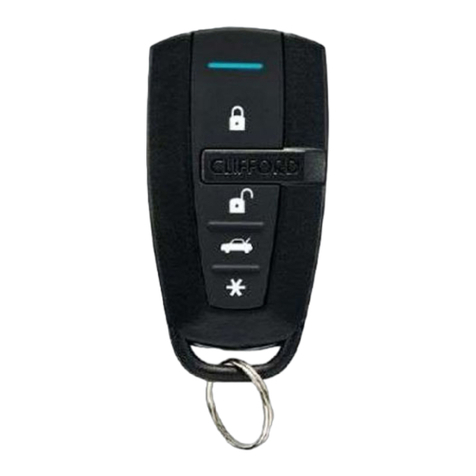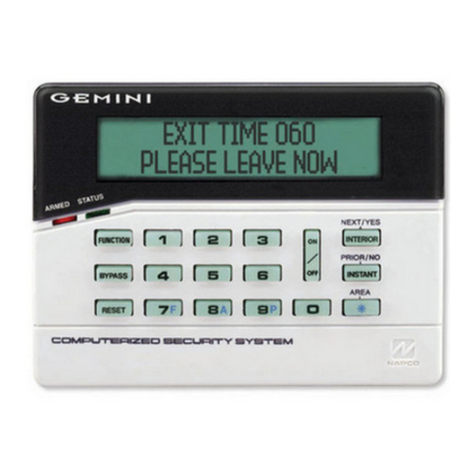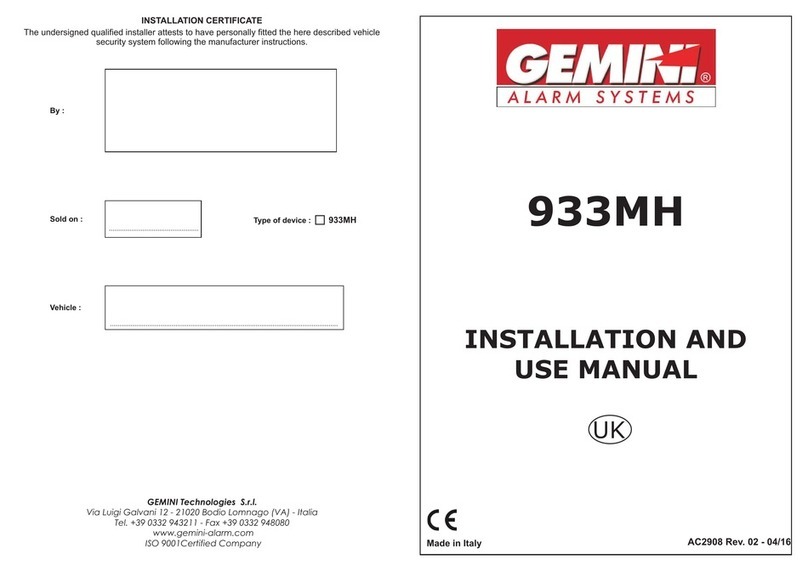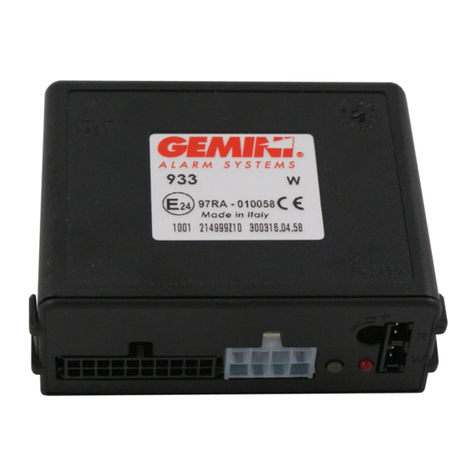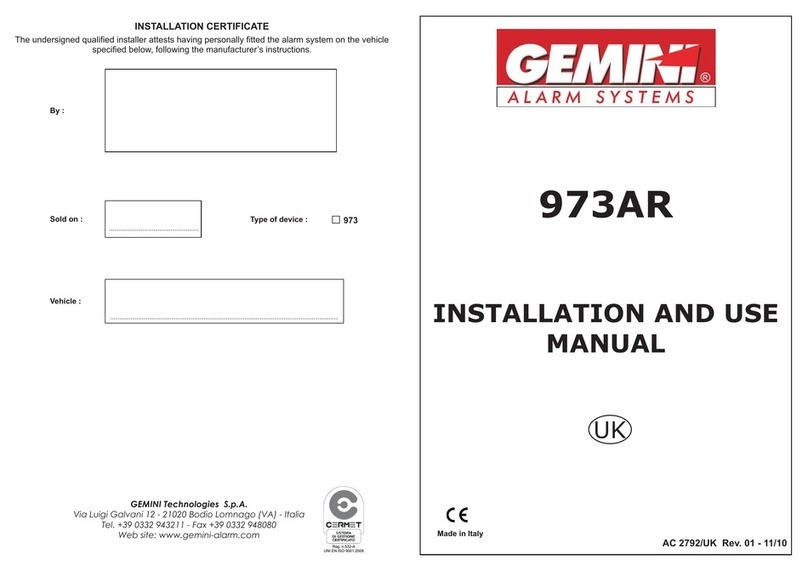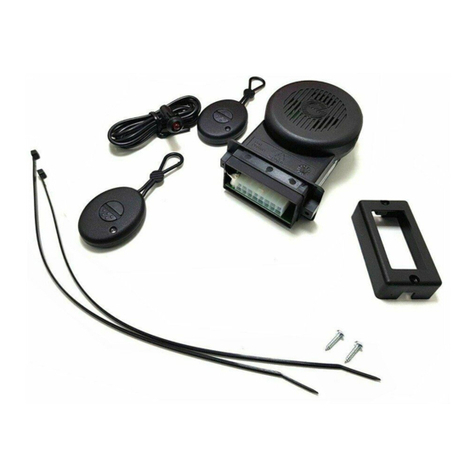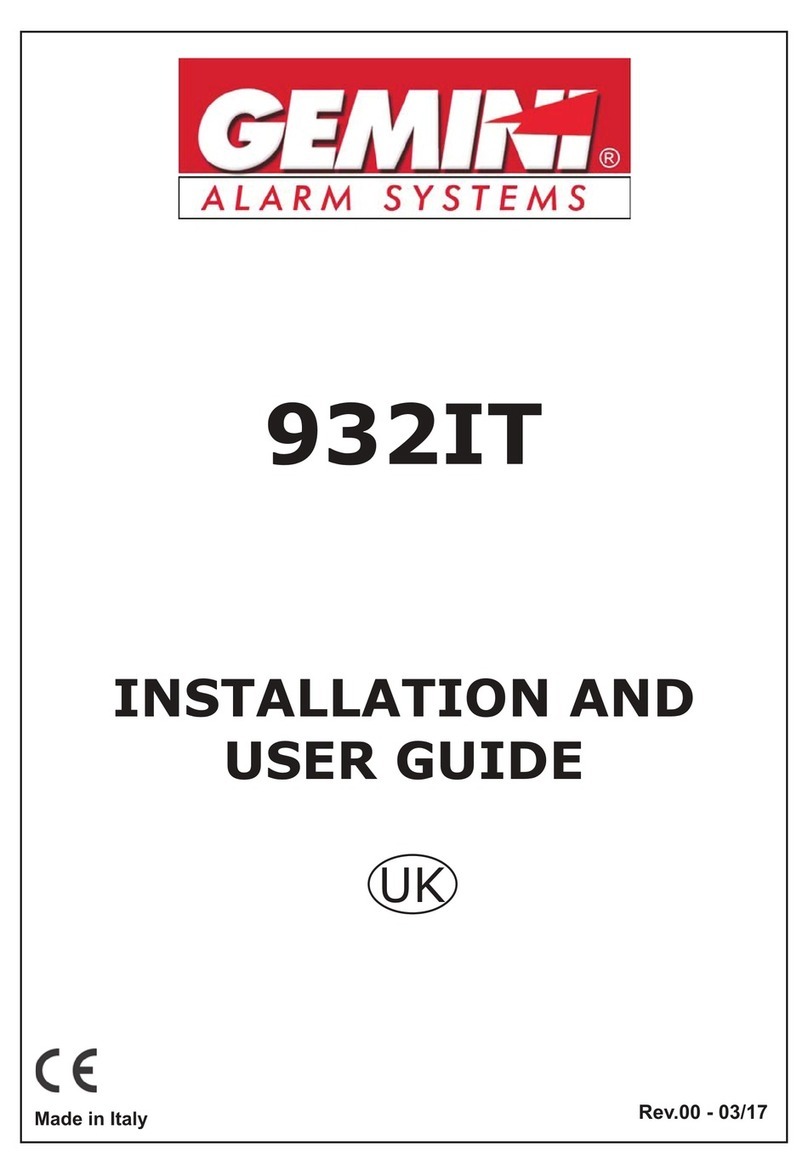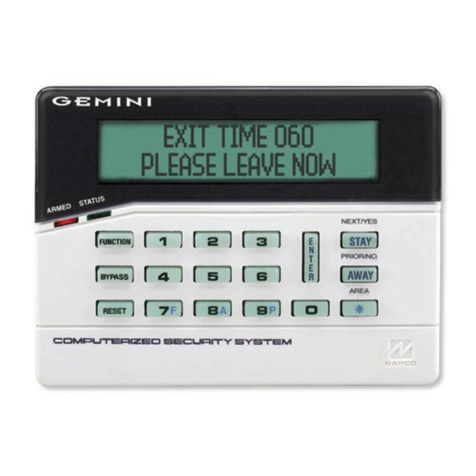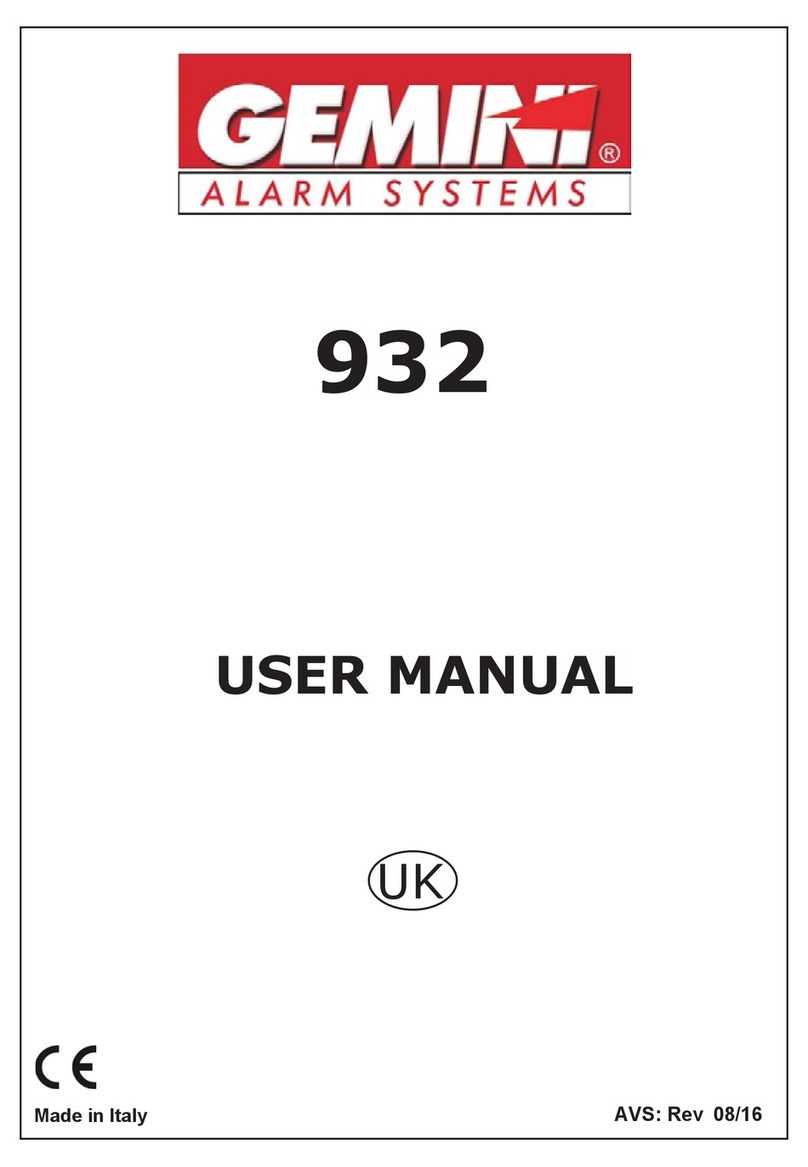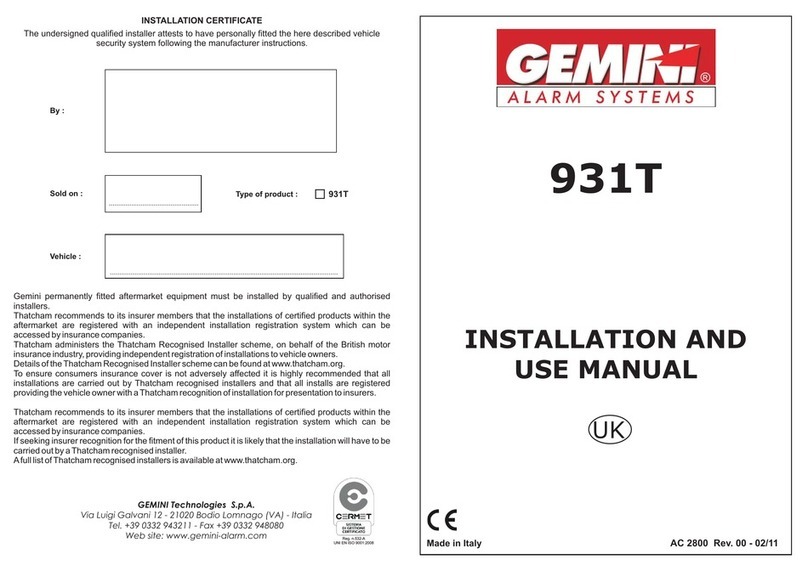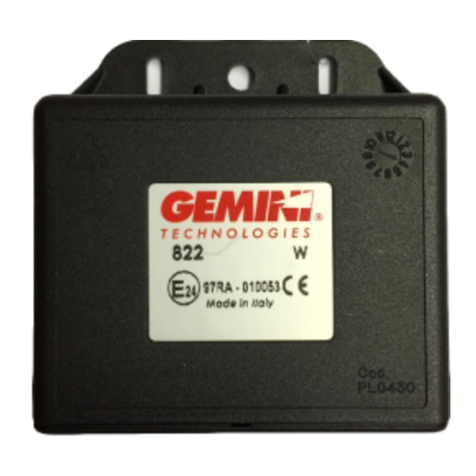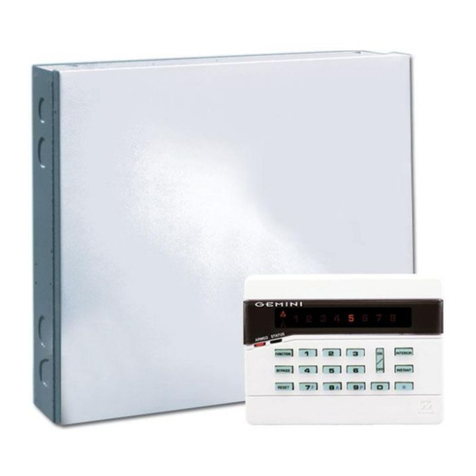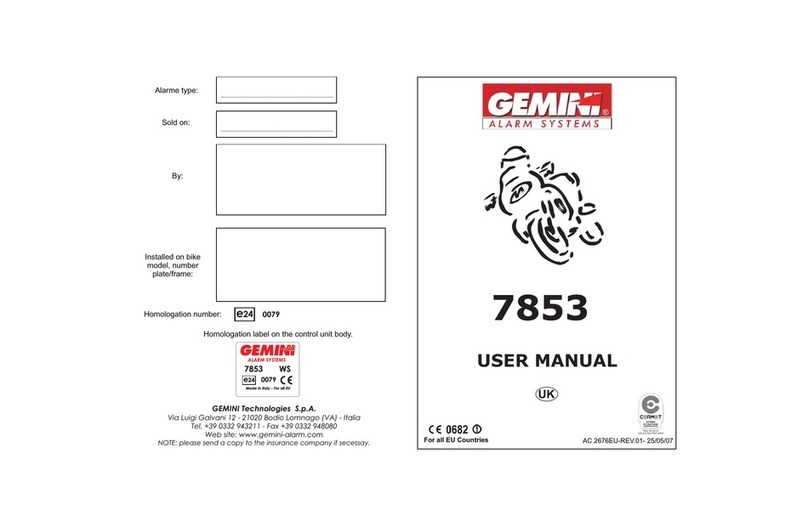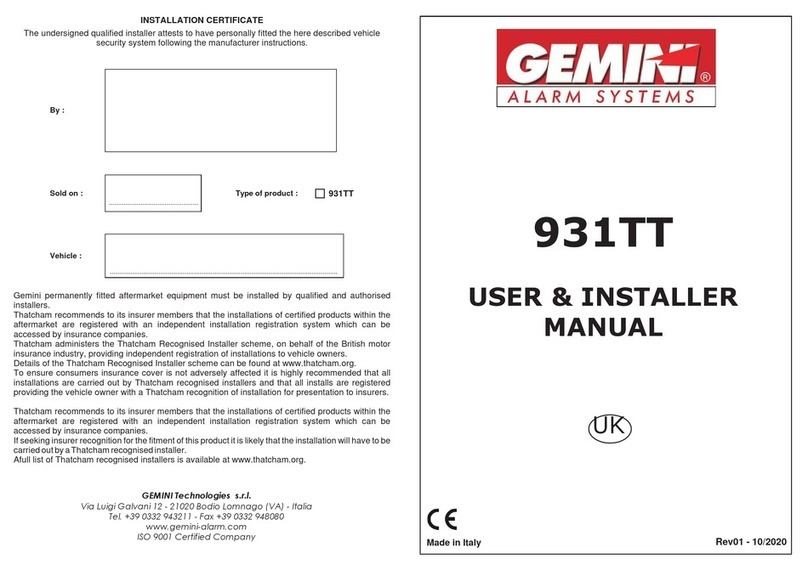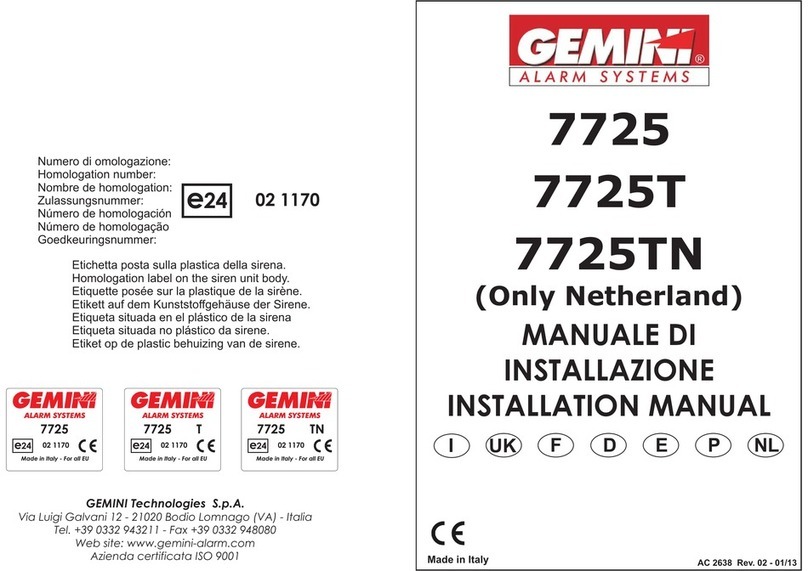9
keypad will beep 6 times, indicating the panel has
been disarmed. The red Armed LED will go out.
If an incorrect Arm/Disarm Code is entered, the
keypad will sound a 1-second tone, indicating
incorrect entry. Press the Ckey and re-enter
the code.
Disarming after an Alarm (Alarm Memory)
The armed LED and the zone(s) that caused the
alarm will be be flashing. Disarm the panel. The
system is currently not detecting zone faults or
displaying system trouble. The zone(s) that
caused the alarm will continue to flash. The
STATUS and HSYSTEM TRBL LEDs are out
indicating:
The system is displaying Alarm Memory.
Press the Ckey to clear Alarm Memory.
Bypassing
Automatic Bypassing
Note: Automatic Bypassing has not been
evaluated by UL
Home/Away with Delay Zones
This zone type has the following operation
depending on whether an Exit/Entry Zone has
been violated during the Exit Delay time.
Home
Exit/Entry Zone is not violated
Zones selected as Home/Away with Delay
Zones will be bypassed automatically.
Away with Delay
Exit/Entry Zone is violated
Zones selected as Home/Away with Delay
Zones will have a fixed 20-second entry
delay when violated before an Exit/Entry
Zone.
Full Setting the System with Automatic
Bypassing - Home/Away with Delay
Zones
From the Keypad
Press BC to return protection to
Home/Away with Delay Zones that have
been automatically bypassed. Three
minutes are allowed to walk through Exit/
Entry and Exit/Entry Follower Zones.
Using A Keyfob (GEM-KF)
All zones in the system can be armed
regardless of the state of the Exit/Entry
Zone when arming with a Keyfob and using
an AUX key programmed as Full Set.
Press [ON] and press and hold the [A1] or
[A2] keys for 1.5s when leaving the
premises. All zones, including Home/Away
Zones are armed.
Bypassing a zone
Press the Bkey, then the zone number to
be bypassed. While the panel is DISARMED,
the bypassed zone LED will flash slowly;
indicating the zone has been bypassed. While
the panel is ARMED, the bypassed zones will
only be displayed if the Display Bypassed [21-3]
option has been selected.
Unbypassing a zone (Disarmed only)
Press the Bkey then the number of the
zone to be unbypassed.
Group Bypass
Press the Ekey to Bypass all Exit/Entry
Follower Zones [02] or Home/Away Zones
[01] (only if the system is programmed
exclusively for Home/Away with Delay
zones).
Using A Keyfob (GEM-KF)
Hold the [A1] or [A2] key on the Keyfob to
Bypass all Exit/Entry Follower Zones [02] or
Home/Away Zones [01] (only if the system is
programmed exclusively for Home/Away with
Delay zones).
User Program Mode
To prevent the loss of the User 1 Code, the panel
default program includes User 1 Code Lockout
[96-2].
To change the User 1 Code from its default value
of 1234, program the 4-digit User 1 Code through
Dealer Programming [95]. User 1 Arm/Disarm
code is also used to program User Codes 2 - 8.
By default, the User 1 code cannot be re-
programmed by the user.
If it is necessary to change the User 1 code, it
can be changed through downloading or Dealer
keypad programming. From Dealer Program
Mode, change the User 1 Code Lockout ([96-2]
LED=OFF) to disabled.
Entering User Program Mode
